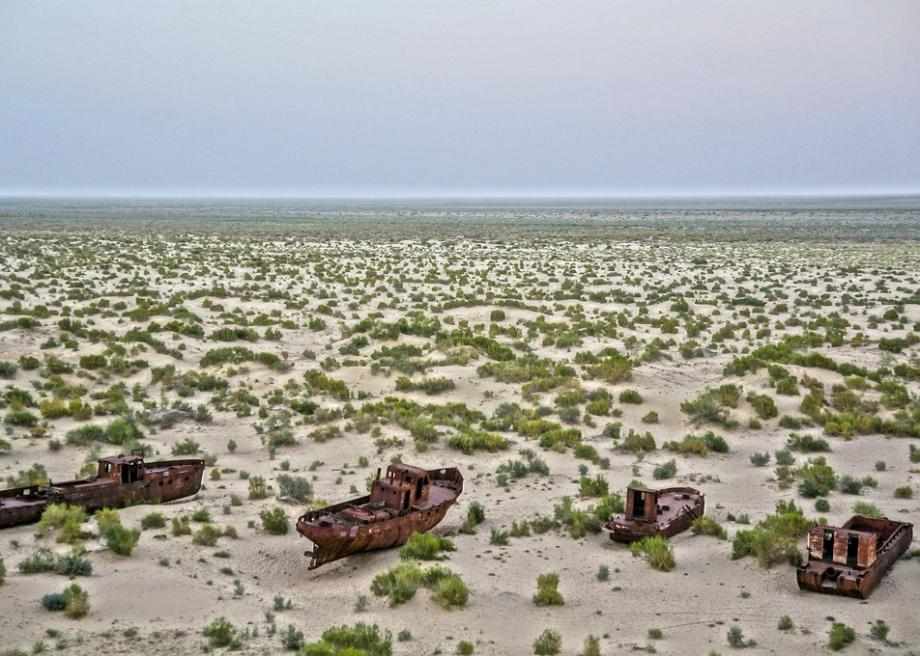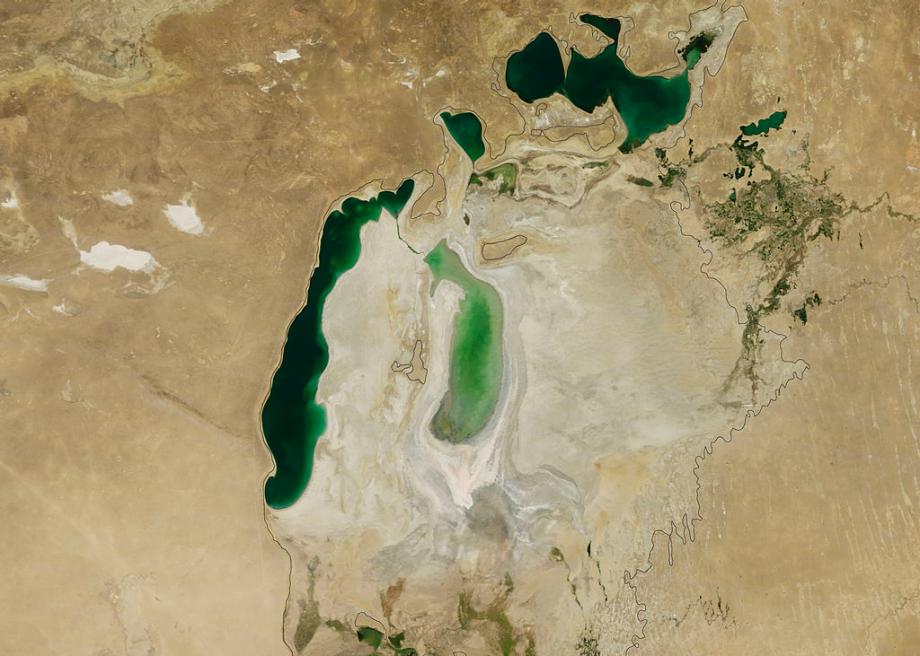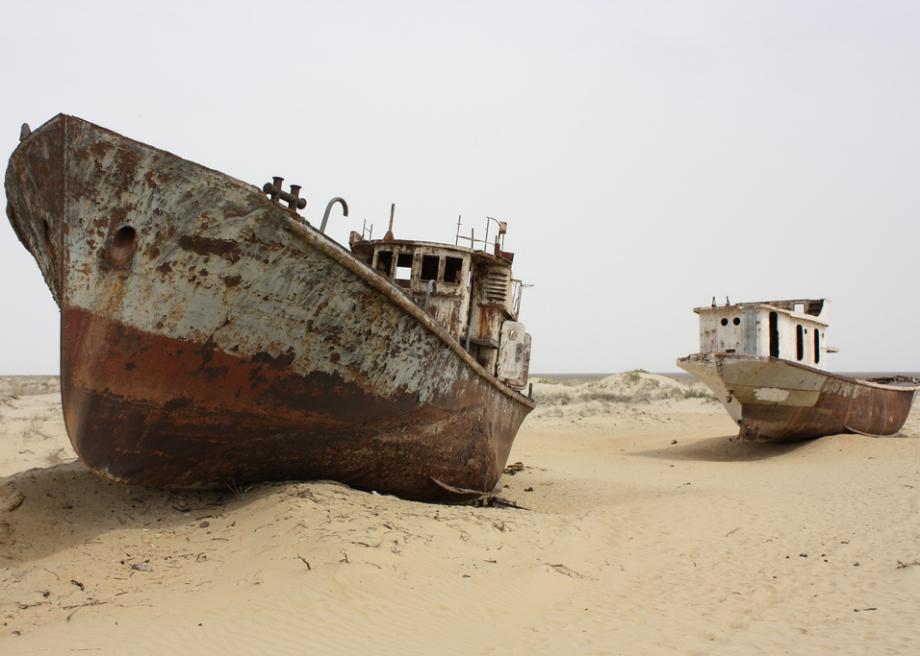Aridity and Anthrax: The Disastrous Effects of a Shrinking Sea

Atlas Obscura on Slate is a blog about the world's hidden wonders. Like us on Facebook, Tumblr, or follow us on Twitter @atlasobscura.
Once the fourth-largest lake in the world, the Aral Sea in Kazakhstan and Uzbekistan is now a toxic desert littered with rusting ships and plagued with lung-choking dust storms.
The problems began in the 1940s, when the Soviet government built a series of irrigation projects along the Aral's tributaries to support its newly established cotton farms. By the 1960s, so much water was being diverted from the lake that it began to shrink. As cotton production ramped up, more and more water bypassed the Aral Sea, causing its levels to fall dramatically and increasing its salinity. By 2007, the Aral was a tenth of its original size.
The area's once thriving fishing industry has been decimated, and the exposed lake beds contain a high concentration of crop-killing salt, as well as pesticides, industrial chemicals, and fertilizer run-off. These irritants swirl in the air during dust storms, causing tuberculosis, cancer, and lung disease among the tens of thousands of people living nearby.
To make what was already a horrific situation worse, the draining of the Aral Sea exposed Vozrozhdeniya, an island where the Soviets conducted secret open-air bio-warfare experiments during the 1950s. Vozrozhdeniya, once a storage house for anthrax spores, bubonic plague bacteria, and weaponized smallpox, became part of the surrounding landscape. Given anthrax's long and stubborn lifespan — and 90 per cent mortality rate — this was cause for concern. In 2002, in the wake of post-9/11 anthrax scares in the U.S., a joint American-Uzbek team decontaminated 10 anthrax burial sites on the former island.

More seas to see:
View Aral Sea in a larger map

